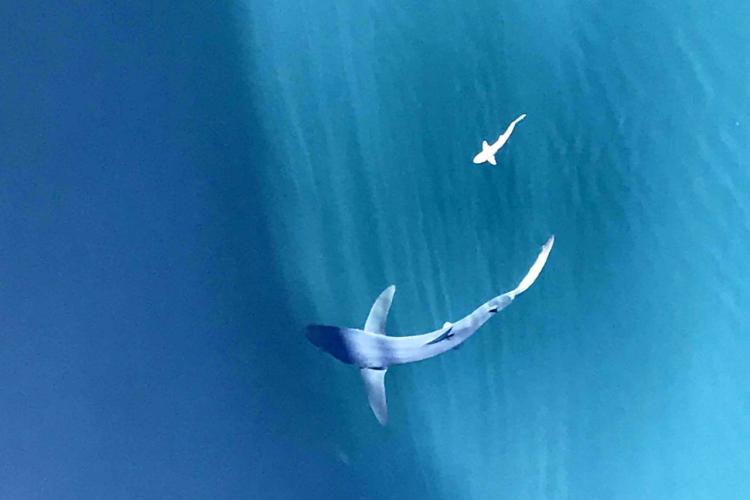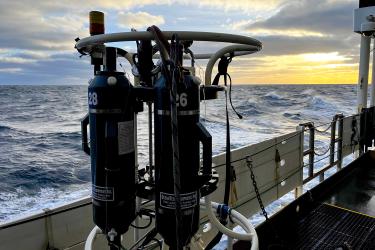When you’re out on the Northeast Fisheries Science Center’s bottom trawl survey, you focus on all the animals brought up in the net. But it’s also important to look out toward the surface of the wide, open ocean.
While sampling near Nygren Canyon on the northeastern edge of Georges Bank, chief scientist Jakub Kircun, scientist John Galbraith, and NOAA Corps officer Lieutenant Cherisa Friedlander saw what looked like a shark’s dorsal fin just ahead of the ship. It was a blue shark, Prionace glauca. Jakub had his camera handy.
They followed the shark, estimated at about 6 feet long, to the right side of the ship just in time to see it circle a baby dogfish four or five times before taking a quick bite and swimming out of sight down into the water.
Unfortunately, the dogfish didn’t make it, but sharks need to eat, too! That dogfish may have been a sign of what was beneath us because about 8,000 pounds of dogfish came up in the next survey tow.
Jakub’s fantastic picture shows the distinct characteristics of the blue shark. The first trait that quickly jumps out is its long and narrow pectoral fins. This beautiful blue shark also has a long and pointed snout and can travel extremely far distances, preferring cooler water. While blue sharks eat small sharks, they also dine on animals that live in the open water such as sardines, herring, or squid. Floating dead whales and dolphins may also attract blue sharks.
When looking out across the ocean, whether from a ship or from a beach, it’s easy to forget that there is a whole ecosystem full of organisms put there, from whales as big as a school bus to tiny plankton only visible with a microscope. So keep an eye out. Chance will sometimes offer you a glimpse of the amazing ocean world in action.



